Take The Stage
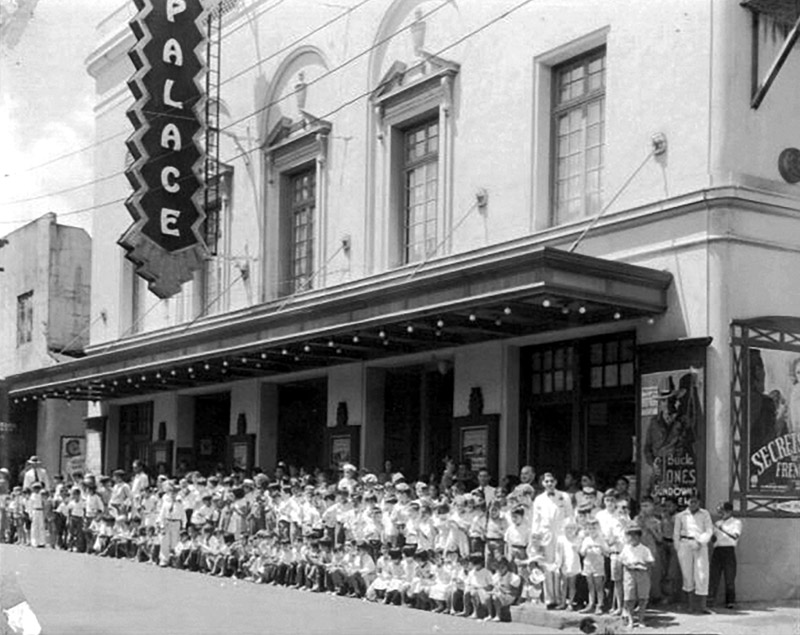
Palace Theater has its roots in the mid-1920s, during a time when silent movies were community favorites. Now, the facility hosts everything from plays to musicals. PHOTOS COURTESY PALACE THEATER
With roots dating back to the early 1900s, many Big Island theaters continue to entertain patrons.
A roundtrip around Hawai‘i Island reveals the presence of a small historic theater in the center of nearly every town. From Kona and Nā‘ālehu to Pāhoa and Honoka‘a, theater buildings dating mostly from the 1920s and 1930s still call the island home. Showcasing a bygone era, while embracing and inspiring the present, these theaters — with their wooden aisles, creaky floors, glorious ceilings, vintage lighting and historic ambiance — prove their worth every time an audience is seated and the velvet curtains rise.
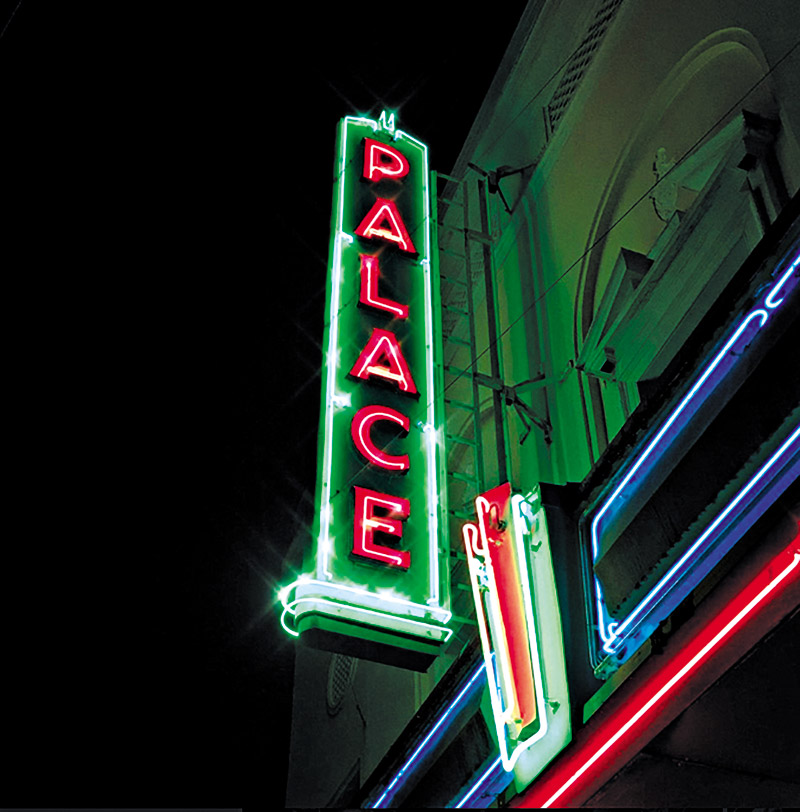
Many of these buildings sit in states of active disrepair and are sadly permanently irrep-arable. Others, meanwhile, have suffered the effects of fire or termites. Fortunately, several have been lovingly restored and used for decades for film screenings, and by community theater productions, musicians and visiting performing artists.
Palace Theater
Probably the oldest theater on the island, Palace Theater was built in 1925 by Hawai‘i entertainment entrepreneur Adam Baker, the nephew of a former royal governor. In the early and mid-1920s, silent movies were all the rage, and film idols such as Douglas Fairbanks Jr., Charlie Chaplin, John Barrymore, Rudolph Valentino, Buster Keaton, Gloria Swanson and many others graced the screen at the Palace to adoring audiences.
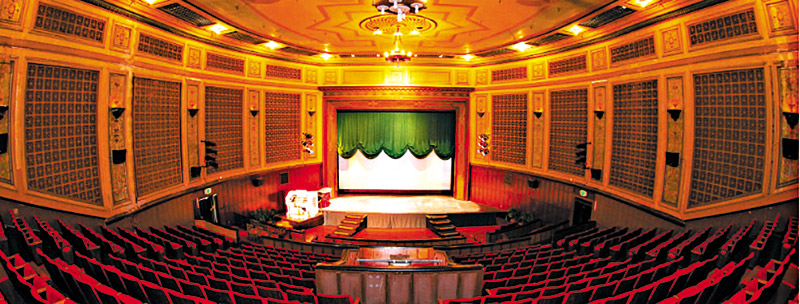
According to Historic Hawai‘i Foundation, the Palace was considered the grandest, most elegant theater outside of Honolulu, with its foundational redwood structure, which was built with 14 huge, old-growth redwood columns that supported the corrugated metal roof. The beautiful façade recalls a 1920s revivalist, neo-classical elegance.
Despite being located on Haili Street within easy walking distance to the bayfront, the building nonetheless survived Hilo’s devastating tsunami events in 1946 and 1960. Other area theaters were not as lucky.
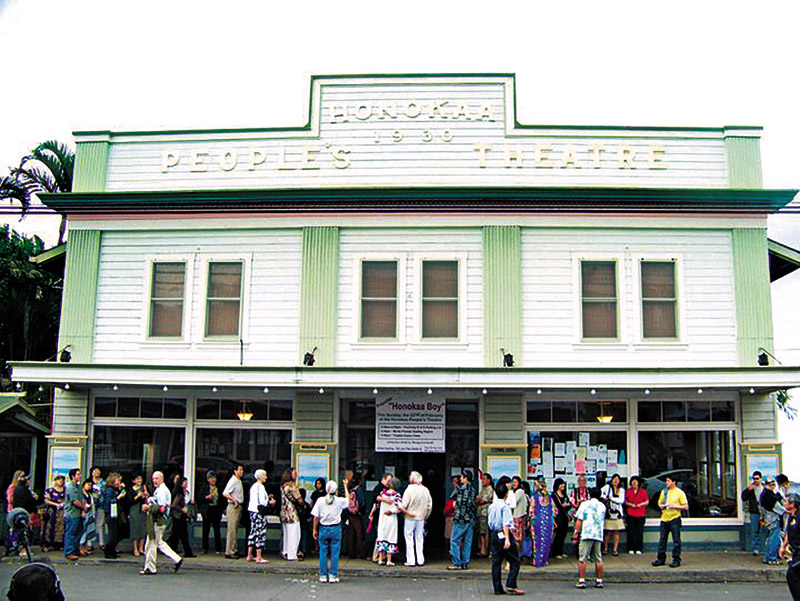
Now is a hub for local musicians and film screenings. PHOTOS COURTESY HONOKA‘A PEOPLE’S THEATRE
With excellent acoustics, stadium seating and a historic pipe organ, Palace Theater is a gem in the heart of Hilo that hosts films, musical events, plays and other performing arts.
One of its most impressive and endearing features is its three-manual, seven-rank Robert Morton pipe organ, custom built in 1929 specifically for the Palace, and played to accompany silent films.
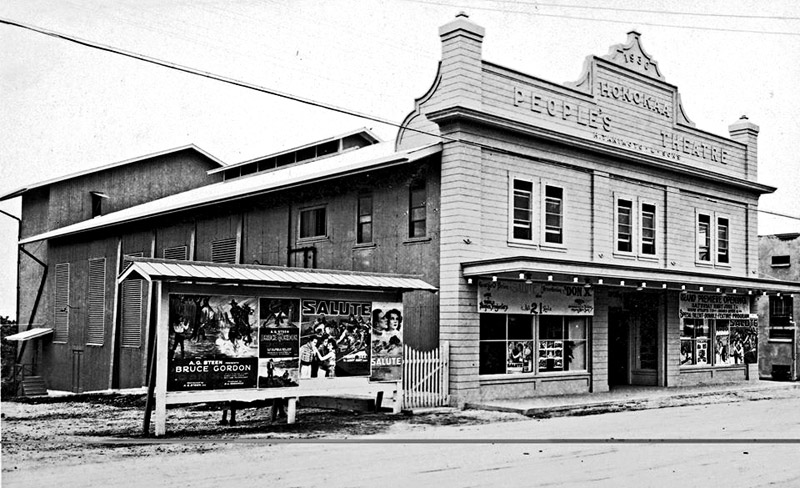
Honoka‘a People’s Theatre, which was built in 1930.
When the theater changed hands, the pipe organ moved around for a while, including to Honolulu, after being damaged twice by tsunami events while it was relocated at the Hilo
Theatre. Substantial pieces of it were returned to its rightful home at the Palace, where it was restored and is still played today during silent film showings.

Aloha Theatre regularly screens Rocky Horror Show.
Ongoing restorations to the main theater structure over the years by different owners and nonprofit groups have ensured Palace Theater can remain a treasured resource to be enjoyed for generations to come.
For more information, visit hilopalace.com/support
Honoka‘a People’s Theatre
Hard as it is to believe now, sleepy Honoka‘a was once the liveliest, most action-packed town on the island, second only to Hilo. Hosting the raucous cowboys who worked the ranches of Mauna Kea, active military, farmers and plantation workers from nearby sugar mills, the town featured stores, saloons, pool halls and theaters, the largest of which was the storied Honoka‘a People’s Theatre.

Aloha Theatre still has that vintage look, even down to its ticket booth area KRISTINA ANDERSON PHOTOS
Built in 1930 by the Tanimoto family, the theater screened Hollywood silent pictures as well as foreign-language films from Japan, Portugal, the Philippines and Mexico, catering to the diverse local audience that patronized the town.
In 1988, Tawn Keeney, the plantation physician who treated the elderly owner Mrs. Tanimoto (she lived in an apartment onsite), began to help with chores around the theater and eventually bought it from her and began renovations.
When the last plantations closed in the 1990s, the town basically ground to a halt, but the theater and the people who loved it hung on through the hard times.
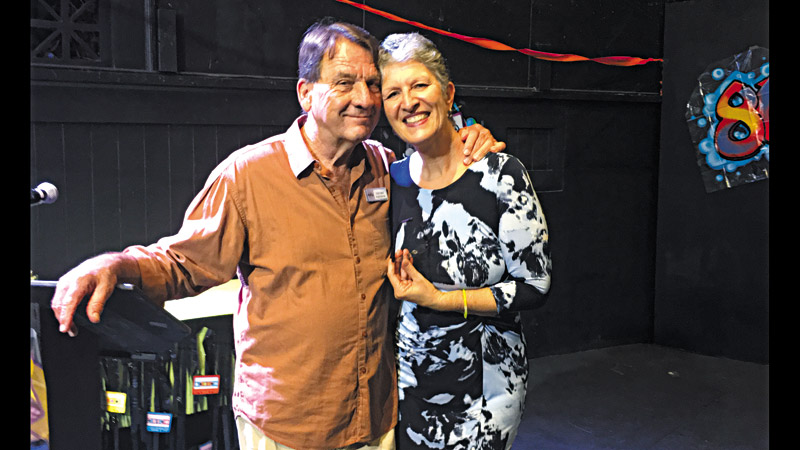
Aloha Performing Arts Co. artistic director Jerry Tracy and vocal director Marinella Savarese at the opening of Jesus Christ Superstar back in 2017. PHOTO COURTESY MARINELLA SAVARESE
The restoration project was a labor of love for Keeney. Committed to bringing the building back to its former glory, he painted, did electrical work, re-roofed, built a new stage and added the largest screen on the island with accompanying surround-sound equipment and an HD digital projector.
The Hāmākua Music Festival also helped Honoka‘a People’s Theater get a second life, as did famed Honoka‘a High music teacher and jazz musician Gary Washburn, who has gained international acclaim with his world-class jazz program, garnering renown for the town, the theater and even the island.
Today, the theater hosts jazz, rock, blues and Hawaiian musicians from all over the world, screens first-run films and is forming a nonprofit to help fund restorations and equipment upgrades.
For more information, visit honokaapeople.com.
Aloha Theatre
Aloha Theatre, known for its robust community theater association (Aloha Performing Arts Co.), began life in 1932 as Tanimoto Theater. It ran films for the Japanese coffee plantation workers in South Kona, later expanding to show films that appealed to the multicultural audience that populated the area, including Portuguese and Filipino flicks.
The first stage show was produced in 1939 by Kona Lions Club and was called Who Wouldn’t Be Crazy?, thus ushering in a second life as a venue for the performing arts.
In 1991, the theater underwent some substantial renovations and also acquired its iconic and artistic director: the one and only Jerry Tracy.
Six APAC productions annually (including the perennially popular Rocky Horror Show), concerts, films and film festivals, workshops, dance classes, youth and teen programs, and more keep the designated “Grand Lady of Kona” attracting and entertaining audiences almost continually throughout the year.
For more information, visit apachawaii.org

